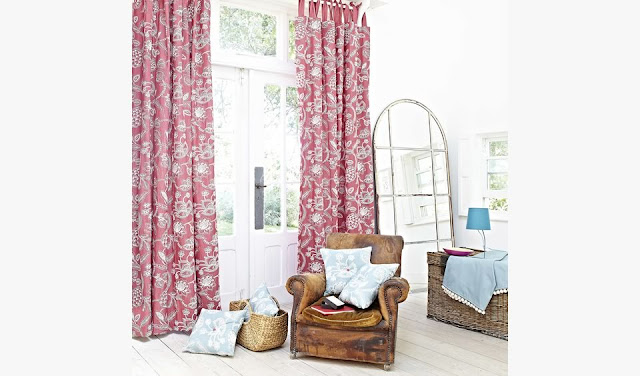1. Start With Something Special
 |
| This room could have started with the blue lamp.... |
Then let that item set the theme and style for the room and you'll find that the rest of your decisions will follow on from that. Easy!
2. Feature Something, But Not Everything
 |
| The artwork is left alone on the wall so it can be a feature, other art would only detract and distract from it |
Don't try and make everything a feature. Let the real feature stand out, give it room to breath and be appreciated.
Keep an open mind on what can be a feature. It could be anything from a fireplace to a painting or maybe an old fashioned chandelier.
3. Keep It Consistent
 |
| This room is consistent in terms of style and colour palette |
If you want an eclectic mix it is still possible but choose carefully, as it is a style that can look very disjointed and messy rather than stylish if there is not some connection between the items, whether that be colour, design era or materials (eg. natural).
4. Showrooms Are Big Places
 |
| Mark out the scale of the furniture you want in the space before you buy |
 |
| Measure the space and the furniture before you buy |
People often make the mistake of buying furniture in a showroom that then looks way too big when you get it home. Measure your interior space before you buy and ideally test the scale of the item you want in the place you want using sheets of newspaper to mark out floor area that will be covered. You can also bring in old chairs and cover them with sheets to get a feel for height.
And don't automatically go for a suite, especially if you're limited for space. Consider a sofa and some individual chairs or recliners because the chairs that come in a suite are often huge.
5. Light Is Open, Dark is Cosy
 |
| Even though the room is bright the dark wall and fabrics help close in the space and make it feel more cosy |
 |
| The white wall and light wood floors along with the large mirror make this small space feel open and spacious |
There is a reason that show houses use magnolia and white on the interior walls. It's because light colours reflect more light and have the effect of making spaces feel larger so you'll pay more. Mirrors will also achieve the same effect.
There is also a reason that pubs and bars have darker colours on the walls and other surfaces as it has the effect of closing in the space and making it feel cosy, that way you'll feel more comfortable and stay longer
These simple but effective colour choices can also be utilised in your own spaces.